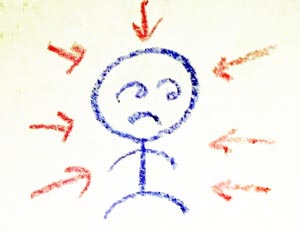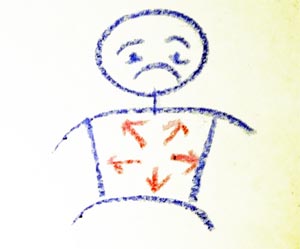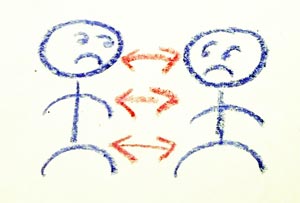We are threatened with suffering from three directions: from our own body, which is doomed to decay and dissolution and which cannot even do without pain and anxiety as warning signals; from the external world, which may rage against us with overwhelming and merciless forces of destruction; and finally from our relations to other men. The suffering which comes from this last source is perhaps more painful to us than any other. (Civilization and its Discontents, page 24)
I’ve been thinking lately about how we have employed technology against each of these.

To protect us from suffering caused by the outside world, we have our oldest and most developed technologies. Houses keep us dry, clothes keep us warm, roads to make it easier to travel, fences to keep out wild animals, air conditioners keep us cool, and on and on.

Suffering caused by our bodies was next. Most obviously, farming technology relieved the bodily pain of hunger. More recently, medicine can now prevent or cure many diseases. We have anesthetics against pain, dentistry to save our teeth, alka-seltzer for upset stomachs, arthroscopic surgery for faster recoveries, and so much more. There’s a good chance that you wouldn’t be alive today without modern medice!

Suffering from interpersonal relations is the lastest target for technology. Taking a broad definition of “technology,” you could say that language was the first social technology. Scientist Robin Dunbar has argued (as I’ve discussed before) that language developed as a more efficient way than than physically grooming of sealing bonds within a group.
Domesticated pets are also a form of relationship technology. Who hasn’t felt less alone when comforted by the family cat or dog?
Letter-writing was early relationship-tech that allowed relationships to exist over longer distances– and even with people you had never met. Later, the telephone relieved the suffering of not knowing about a far-away loved one. And just in the last decadesocial networks and texting have, especially for young people, radically changed relationships again.
More interesting is that social technology removes potential suffering by removing risk. In her book Alone Together, Sherry Turkle recounts an interview with a teenager:
A text, [the teenager] argues, is better than a call because in a call “there is a lot less boundness to the person.” By this she means that in a call, she could learn too much or say too much, and things could get “out of control.” A call has insufficient boundaries. She admits that “later in life I’m going to need to talk to people on the phone. But not now.” When texting, she feels at a reassuring distance. (Turkle, Sherry (2011). Alone Together p. 190.)
That’s a subject for another post. But for now I enjoy looking at the world of technology through the lens of “What suffering is this technology designed to reduce?”
